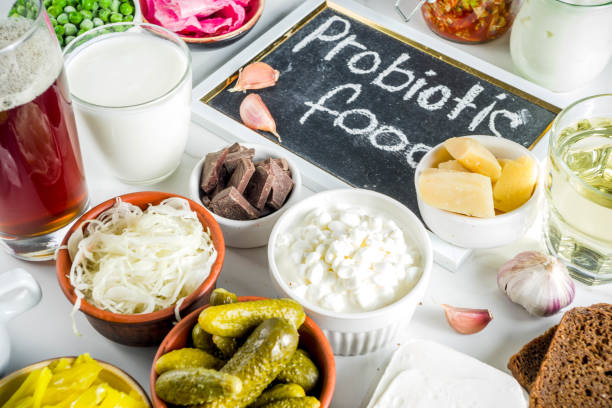South African cuisine is a tasty mix of influences from its colonial past. Cape Dutch and Cape Malay are the two main styles of South African cuisine, influenced by German, French, and British colonists. Cape Dutch cuisine combines spices from Java, Bengal, and Malaysia with Dutch meat dishes. Cape Malay is a cuisine influenced by the slaves of Indonesia and Africa. It has unique words and Islamic traditions. South African cuisine combines Dutch and German flavors with Indonesian and African influences to create European-style words that have an exotic Eastern twist. South Africa’s 20 Must-Try Foods
- Bobotie
Bobotie is South Africa’s most popular dish. It’s a delicious blend of curry spices, like cumin and turmeric, with minced beef or lamb. It’s baked in an egg-and-milk topping with dried fruit and onions. It is usually served with rice, but you can make it meatless by substituting lentils. The name “bobotie,” which has its roots in Malay and is derived from the word “bombe,” meaning curry spices, reflects this. Bobotie, a popular sweet dish often served with hot sauce and dating back to 1609 Dutch recipes, is a favorite of South Africa’s diverse cuisine.
- Potjiekos
Potjiekos is a beloved South African dish. It’s a stew of meats and vegetables that are slowly cooked in an iron pot called a potjie. The layers of ingredients are not removed until the dish is served, which preserves their flavors. Oxtail potjiekos are a popular variant, enjoyed at family gatherings.
- Biltong & Droewors
Biltong, a traditional South African snack, is made from thinly sliced, air-dried beef or springbok-like meat. They are seasoned with vinegar, spices, salt and sugar. Biltong is Dutch for “meat strips” and comes in a variety of variations, including beef, chicken, or game. It’s great as a snack or to use in potjiekos. Biltong is a popular meat strip that originated in Zimbabwe, Namibia, and South Africa. It comes in a variety of versions, including chicken or venison. These are often used as a base for soups and stews or to add flavor to dishes like potjiekos.
- Boerewors
Boerewors is a popular South African sausage that combines beef, lamb, or pork with spices. It is traditionally cooked on a barbeque. The name is a combination of “Boer,” which means farmer, and “wors,” which means sausage. Boerewors is a South African favorite, with at least 90% of meat and spices such as cloves, coriander, and nutmeg. This thick sausage is often served at braais, along with side dishes such as roosterkoek. It has a cultural significance and originated in South Africa and Zimbabwe.
- Cape Malay Curry
Cape Malay Curry which was created in the 17th Century when Dutch and French colonists brought spices from Indonesia and India to Cape Town. It features herbs such as cinnamon, saffron, and turmeric. Combining local ingredients with this flavorful blend creates aromatic curries and stews, which are still enjoyed in the region.
- Malva Pudding
South African dessert, malva pudding, is similar to sticky toffee. It’s a Dutch-style dessert with apricot jam infused in the sponge and a creamy sauce. The sponge is drenched in a hot sauce of cream, sugar, butter, and vanilla. It’s perfect for Sunday lunches. The name is possibly derived from Afrikaans, malvalekker. It suggests a marshmallow texture. It’s often served with custard or ice cream.
- Chakalaka & Pap
Chakalaka, a staple South African dish, and pap are a delicious combination. Chakalaka is a vibrant vegetable dish that combines tomatoes, peppers, and carrots with spices. It’s best served cold. This dynamic duo, which is often served with braaied meats, breads, salads, stews, and pap (a starchy white corn maize dish similar to American grits), elevates the dining experience.
- Braai/Shisa Nyama
The South African culinary tradition of braai (or shisa-nyama, which means “burn the meat” in Zulu) originated in Johannesburg townships. These communal gatherings are usually held at weekends and involve grilling meats such as beef, chicken, pork, lamb, and sausages. The participants enjoy the vibrant atmosphere and music as well as the chance to share food with others in a community setting.
- Bunny Chow
Durban is the origin of bunny chow – a popular South African street food. This dish involves hollowing out bread loaves and filling them up with curry. There are many variations, including chicken, pork and vegetarian. This delicious dish is available in Indian restaurants all over South Africa.
- Amarula Don Pedro
Amarula Don Pedro, a South African cocktail, combines Amarula with vanilla ice cream and whiskey. This blend is a smooth mix of sweetness, warmth, and a touch of whiskey. It’s a favorite for enjoying the unique flavors of South Africa. It is available in bars, or you can easily make it yourself with Amarula.
- Melktert
Melktert is a popular South African dessert that resembles a sweet pastry filled with a mixture of sugar, flour, milk, and eggs. It’s topped with cinnamon. This is a delicious treat that can be enjoyed as a sweet or a snack at teatime.
- Vetkoek
In Afrikaans, Vetkoek means ‘fatcake’. It is a tasty South African treat. These fried dough balls have a crispy exterior and a fluffy interior. They can be topped with cheese or honey. Street vendors sell vetkoek stuffed with curried beef mince.
- Sosatie
Sosatie, a South African favorite dish that is often prepared on the grill, is very popular. The marinated meat is grilled on sticks, typically lamb or mutton. Named after Cape Malay, it refers to skewered, spicy beef. The marinade contains ingredients such as onions, garlic, chili peppers, curry leaves, and tamarind. This dish is a reflection of the Cape Malay influences on South African culinary tradition, with its unique flavors and grilling technique.
- Koeksisters
Koeksisters are a South African favorite sweet that is made of twisted fried pastry coated with sweet syrup. It’s available in supermarkets and street food stalls all over the country, whether it is in its traditional form or the Cape Malay version flavored with coconut or cinnamon. The name is derived from the Dutch “koek,” which means cake.
- Bokkoms
Bokkoms are mullets that have been salted, knotted, and left to dry. The fish is dried in the sun and sometimes smoked to make this delicacy. It’s similar to fish biltong. It is not for everyone, but it adds a unique flavor to dishes like soups and pasta.
- Gatsby
Gatsby, a giant foot-long roll, is a South African street food. The registration is filled with soft fries, egg, spicy steak, sausage and peri-peri. This legendary roll is a must-try if you’re in South Africa.
- Pap En Sous
The staple South African dish pap, made of ground maize, can be served in many different forms. It can be eaten as porridge or as a ball with sous sauce (a tomato-onion sauce) in restaurants. South African cuisine is characterized by its versatility, which allows it to be prepared in a variety of ways.
- Snoek
Snoek is a mackerel that’s abundant in South African water. It has a delicious taste, but it cannot be easy to eat. Snoek, which is usually served as battered mackerel with French fries in South African cuisine, is a delicacy that you should try if exploring the local cuisine.
- Peppermint Crisp Tart
The Peppermint Crisp Tart, a beloved dessert in South Africa known for its simplicity, is loved by many. This pudding is made with layers of caramel, chocolate, and biscuits. This is a South African treat that you must try.
- Denningvleis
Denningvleis is an ancient South African stew that combines tamarind with spices. You can still enjoy this Cape Malay traditional delicacy, slow-cooked to perfection, at restaurants such as Bo-Kaap Kombuis.
South African cuisine is an eclectic mix of delicious and diverse dishes. It includes street food favorites like Gatsby and bunny-chow, as well as traditional favorites such as bobotie or melktert. Each word is a reflection of the rich culture and history of South Africa. South African cuisine is diverse and unique, whether you enjoy the aromas of Cape Malay food or a braai.

